Motorway A7, Rader Elevated Road
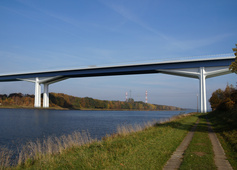
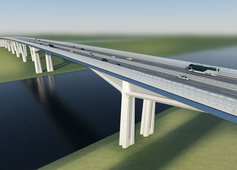
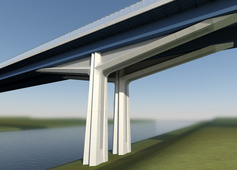
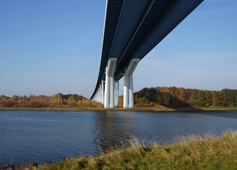
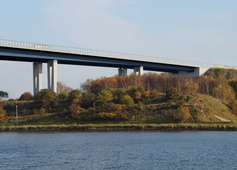
Rader elevated road in Schleswig-Holstein is 1,500 metres long and leads federal motorway A7 over the Kiel Canal as well as the Borgstedt strait. In 1972, the motorway had been opened for traffic and has since then played a central role for traffic from and to Denmark and Scandinavia.
In 2014, a new structural calculation revealed that Rader elevated road only has a remaining life span until 2026. As there is no economically efficient way to strengthen the structure, it has to be replaced by a new structure. The new structure consists of two separated superstructures for each directional lane with a lane width of 14.5 m each. The width of the entire bridge cross section amounts to 36.10 m.
The bridge superstructure is a composite cross section. Each cross section comprises a walkable steel hollow box with cantilever arms on both sides. The concrete deck slab is concreted shear-resistant by shear connectors. To assemble the deck slab, semi-prefabricated components are planned in the areas of the cantilever arms which make it possible to attach the in-situ concrete element over the whole width of the cross section without special formwork. For each partial structure, the substructures are individual supports and concrete abutments. Both piles next to the Kiel Canal are monolithically connected to the bridge's superstructure. The structure is founded on large bored piles.
The possible axis shift of the motorway alignment allows to build the first part next to the existing bridge. After demolishing the old motorway, the second structure is be erected. Assembly of the superstructure is done by incremental launching as well as by strand jacking over the Kiel Canal. The composite slab is mounted subsequently.